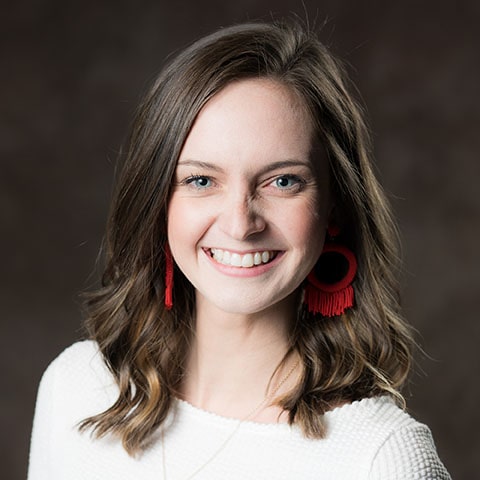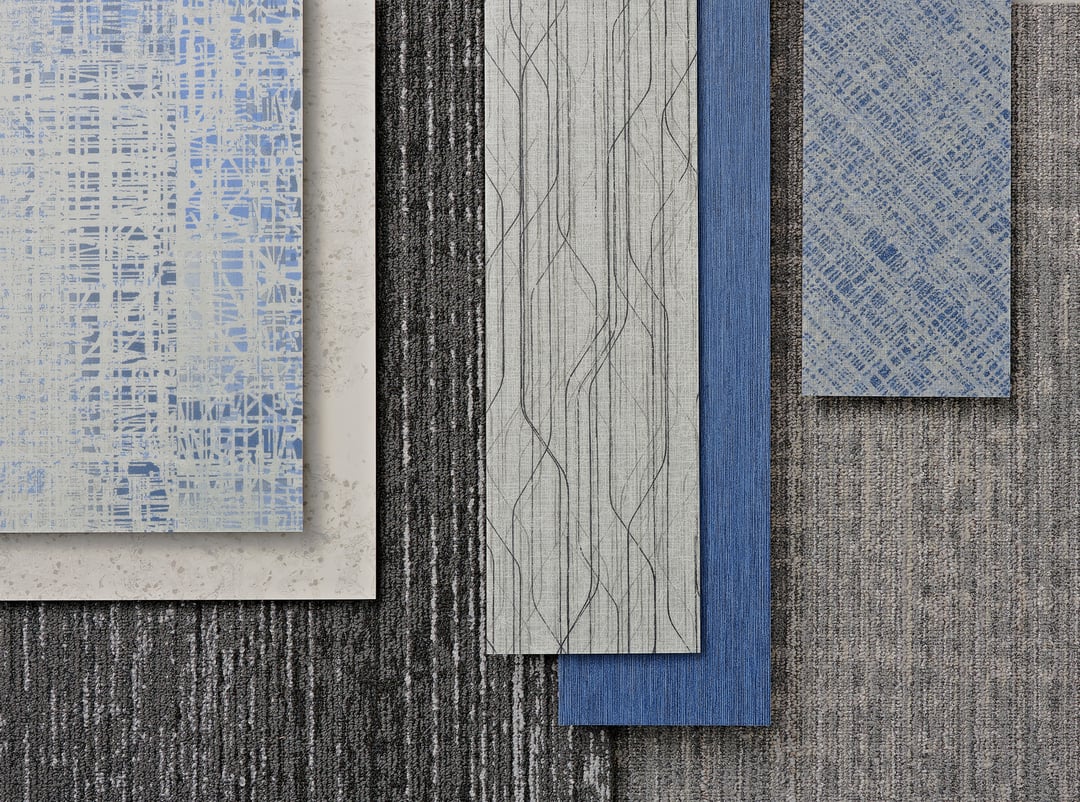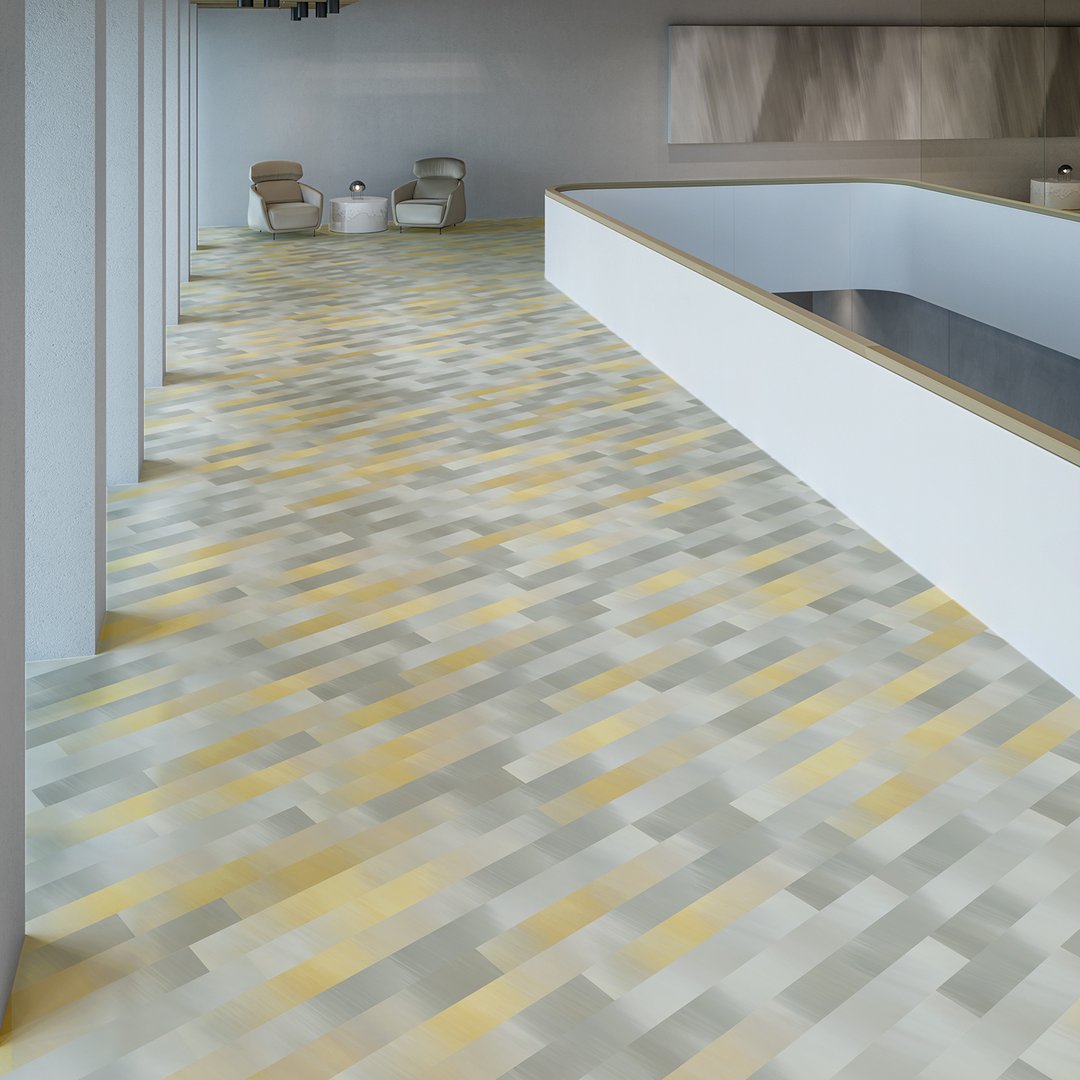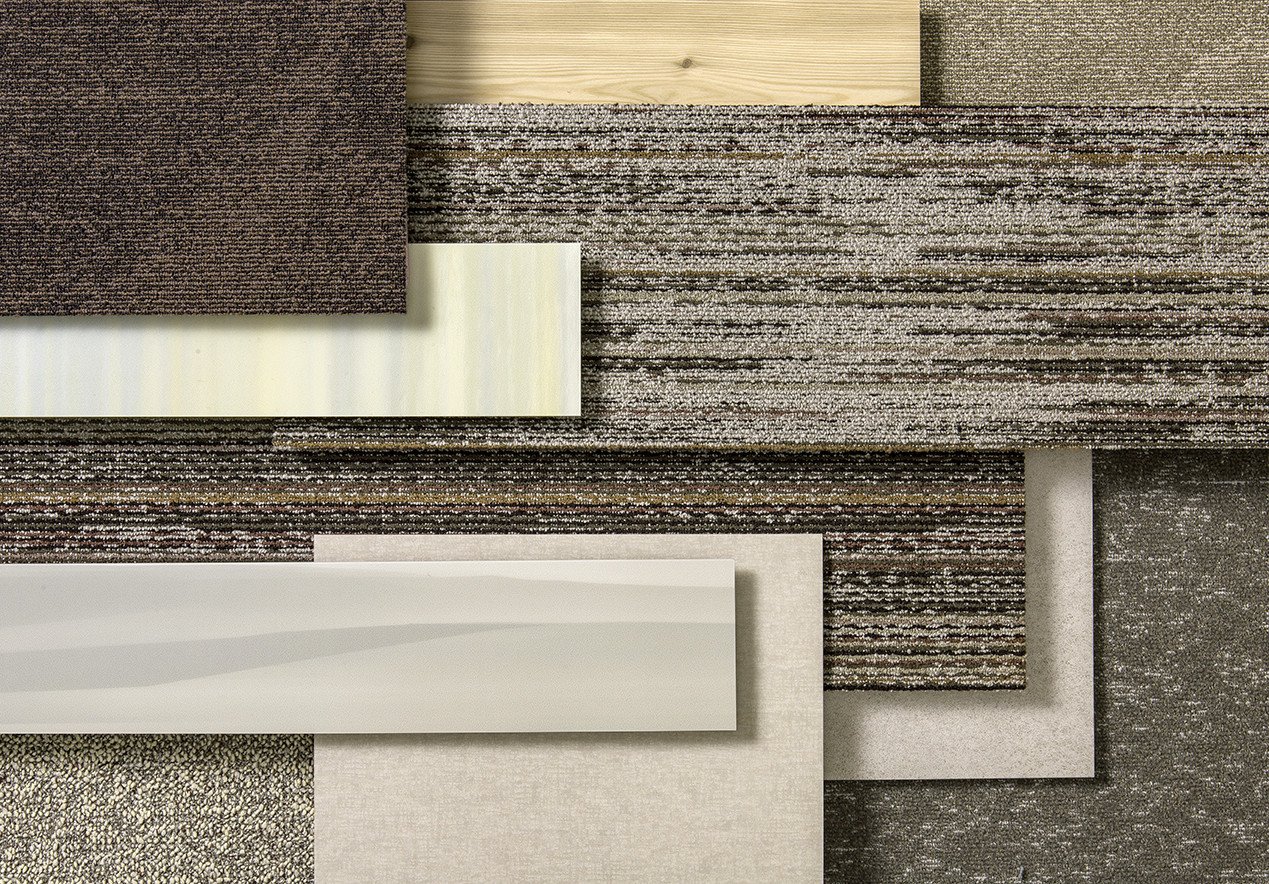Q&A: Roby Isaac and Alison Curran
Customers have all sorts of reasons for selecting a flooring product including performance, durability, cost, etc. Even with all those considerations, it still has to look good. The appearance of hard surface flooring is created in a variety of ways.
We spoke with Mannington Commercial’s Roby Isaac, Vice President of Commercial Design, and Alison Curran, Designer for Commercial Hard Surface, to learn more about how digital printing fits into the design and production process.
Mary Catherine Lowery:
Let’s talk about the design process for digital print. Give us an overview of the design process for digital print including how you start and how it’s different from how you approach other products.
Roby Isaac:
When we're talking about printing for flooring purposes, there's a couple of different ways to do it. It's either onto a film that would go into a composite material like an luxury vinyl tile (LVT), or it can go onto a product like our heterogeneous sheet vinyl products. Both of these product lines at Mannington Commercial use a technology process called rotogravure. That means we engrave steel cylinders with a design or a pattern that can then be printed onto a substrate. With LVT, it's a vinyl film. And with sheet, it's a larger formatted sheet. Luxury vinyl tile (LVT) film is typically about a meter wide whereas the sheet products that we produce are 12 feet wide.
When we're creating the actual patterns, they need to be divided or separated into multiple layers. And each of those layers requires an individual cylinder. So the Design Team comes up with an idea and creates a pattern digitally. Then, that digital file is converted into a file that can be etched into these cylinders. The cylinders are then put onto the machine and as the machine moves, those cylinders are kind of dipped into this well of ink or pigment and offset onto the substrate. Because each cylinder has a different color, they're layered to build the entire pattern.
It’s a lengthy process because it requires a lot of time and effort from the designer to come up with the pattern, then to separate the pattern into the individual components that will then be engraved into the cylinders. Then there's the technical piece of the engraving part. By going to digital the process is simplified, but there's a lot more complexity to getting it right.
Alison Curran:
With roto, you're constrained to how many cylinders the machine can handle in terms of like color. So most of the time it's five stations total, and all of those colors really have to all work together. It's more of a tonal layering of color. With digital, you're not constrained by how the number of cylinders you can use. You can use a whole rainbow of color within one pattern.
Related: Making Digitally Printed Luxury Vinyl Tile (LVT)
MCL:
You said there are five color stations in roto. Is there a limit to the number of colors you can use for digital?
AC:
With digital, it’s unlimited other than the constraints you have to work within the different ink system's color gamut. With cylinders, each station is one color. With digital, you can place whatever color you want wherever you want within the pattern.
RI:
With rotogravure printing, even though we're describing one color or one color station, the cylinders are engraved in a way that the patterns layer on top of each other. A good way to think about it is, with certain types of printing, let's say screen printing, for example, you almost section off areas of your design that are supposed to be a single color or a spot color. If you want red in a certain place, your screen or your cylinder would be dedicated to the red color, where you want the blue you'd have a screen or cylinder dedicated to blue and so on.
With rotogravure, the entire cylinder is engraved with elements of the entire pattern. So you're working with opacity as much as you are with what you want your desired color to be. That’s where the digital design part comes into play. The designer has to be aware of what the overall pattern will look like as well as how the color should be translated or represented in certain specific areas of that pattern. So, when they're layered they combine to create the overall aesthetic and color.
MCL:
When you're going from designing for traditional roto where you have all of these constraints to endless possibilities, how do you hone in on how you want to use color or pattern? Let’s talk about the Northern Wonder LVT Collection and how you chose the direction you did.
AK:
With the Northern Wonder LVT Collection we played around with a lot of different colorings. It’s also worth noting that it has double the amount of repeat that we could get in roto -- the 96 inch repeat versus 36 or 48. So, when it gets chopped up into slabs, there's more variation.
We couldn't have done that with roto, because we are limited to the circumference of the cylinder to create our repeat. We wanted to use our printer to the maximum capability and use the opportunity to do something different. We tried to maximize the repeat and the way the color shifts in those patterns, especially with Aura, where there’s a soft, almost solid neutral that fades into a bright blue or bright green. Using that different of a color, and having that soft of a transition wouldn’t been possible in regular roto.
MCL:
How is that different from the approach you took when designing the new LVT Collection, Active Lines?
AK:
With Active Lines, we are over printing a brighter accent color onto a neutral base because we can achieve much brighter colors than we can in roto. With roto, our color anchor is bright, but that's with a certain number of cylinders printing layer over layer of highly pigmented ink to achieve those bright solids. This is a neutral with little spots of a bright color depending on the pattern.
RI:
I think that one of the really cool things that Alison is able to do with active lines LVT is placing color in a way that would be much more challenging with rotogravure because you have to have balance on the cylinders. You can't have just one area of color and the rest be empty, so if you want a bright blue accent on the flooring product at some point and you're using rotogravure, you're going to see shades of the blue or hints of the blue, because you have to cover it. There has to be a little bit of coverage. Otherwise it's going to be unbalanced.
With digital, that color can be specifically placed. With active lines, there are four LVT patterns, each with a different saturation or concentration of color within the pattern so they don't all feel the same. That's a lot easier to do in a digital process.
AK:
Definitely. Because each pattern places color so differently, that would have required a lot of cylinders for this luxury vinyl tile (LVT) collection.
MCL
Would it be accurate to compare a digital print to the way a color point machine places color for carpet?
RI:
Actually, it would. When you're using something other than a color point, you have to work really hard to hide the color or the yarns or whatever you don't want to use, but with color point, you're able to place it exactly where you want. You're able to manage that color better. The same would go for digital.
MCL:
Lastly, let’s talk about customization and options for digital print. Why is it different than our normal customs process?
RI:
One of the primary reasons we looked at digital in the first place was to explore the idea of customization or personalization, because with other products in our portfolio, specifically carpet, it's easier to do customs. With luxury vinyl tile (LVT), it’s more challenging because of the investment in film. But with digital, you can do these really specific personalized pieces or products for specific customer's needs much easier. You don't have to run as much inventory: you get a lot more flexibility in color; and the design team can create patterns without having to invest in cylinder engraving. Digital fills a big piece of the customization puzzle that we were missing.
AC:
I think the investment in the digital printer for custom opportunities is really important, and we have it profiled out that we can pretty easily match any Pantone, which I think is a game changer.
RI:
Selective color is a big part of the customization process because sometimes an end user client may want to put in something related to their brand or to some type of messaging. Management of control of color is an appealing thing.
Whatever the end goal of creating a design -- a corporate logo or a pattern intended to mimic the bark of an aspen tree – the process is impacted by the way the product will be produced. Digital printing enables a broader spectrum of creativity which ultimately benefits flooring customers. For more information on the array of digitally printed products, contact a Mannington sales representative or explore the collections at manningtoncommercial.com.
You Might Like: The Specifiers Ultimate Guide to Luxury Vinyl Tile (LVT)
Would you like to learn more about Luxury Vinyl Tile?
In this guide, we’ll cover the basics of LVT, Rigid Core LVT, how to choose the right LVT and help you ask and answer the right questions to specify LVT for your specific commercial end use. 👇

.jpg?width=1080&name=ActiveLines_ShiftZoom_ALS301_ShiftZoomBlue_ALS303_ShiftZoomGreen_ALS305_18%20x%2018_RoomScene-min%20(1).jpg)



